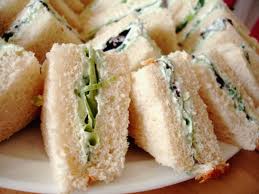My father and his brother were huge Gilbert and Sullivan fans and started me off young at performances at the Jan Hus House (still there.) I learned the music and was thrilled that my camp always put on a G &S operetta. Some years I was in the chorus; other summers I had a part and once– oh rapture! — played Mabel in Pirates of Penzance. I passed the G&S torch to my older daughter whose enthusiasm infected her daughter, my granddaughter. It didn’t hurt that her school taught the seventh grade I Am the Very Model of a Modern Major General. Last weekend that seventh grader and I saw H.M.S. Pinafore at City Center, performed by the New York Gilbert & Sullivan Players. It was brilliant—possibly the best production I’ve ever seen and I’ve probably seen Pinafore fifty times, maybe more. As a bonus, we were treated to a pre-show talk by the company’s director and a post-show backstage tour with cast members where we walked on the set and saw what the auditorium looks like from the stage.
The pre-show talk was a revelation of G & S factoids. I knew that Victorian-era sailors were called “tars” because they picked up the substance from climbing the ship’s riggings, smeared with tar to keep the ropes from disintegrating in the sea air. What I didn’t know was that the classic tar salute is with an open palm turned away to show their officer that they had washed their hands! I also never understood that the last names of the sailors like Deadeye (as in Dick) and Rackstraw (as in Ralph—pronounced ‘Rafe’), are parts of a ship. Worse, the irony of naming a navy ship after a dainty pinafore had missed me. One more: the real-life model for Sir Joseph Porter, K.C.B. (Knight Commander of the Bath) who was made First Lord of the Admiralty, was a bookseller who had indeed stuck close to his desk and never gone to sea. Instead of being insulted by the song, he loved it and went about humming the tune.
 Sir William Schwenck Gilbert who had difficult, cold, parents was the librettist; Sir Arthur Sullivan, who never married but had serious relationships with many women, wrote the music. Both wrote prodigiously apart from each other but neither received the fame separately that was generated by their fourteen collaborations. If you’ve never seen Mike Leigh’s film, Topsy Turvey, about the G&S collaboration, do yourself a favor and rent it. I’m sure it’s not entirely historically accurate but it’s lots of fun even if you’re not an ardent Savoyard.
Sir William Schwenck Gilbert who had difficult, cold, parents was the librettist; Sir Arthur Sullivan, who never married but had serious relationships with many women, wrote the music. Both wrote prodigiously apart from each other but neither received the fame separately that was generated by their fourteen collaborations. If you’ve never seen Mike Leigh’s film, Topsy Turvey, about the G&S collaboration, do yourself a favor and rent it. I’m sure it’s not entirely historically accurate but it’s lots of fun even if you’re not an ardent Savoyard.
In keeping with the Victorian nature of the above, here is a recipe for The Victorian Cucumber Sandwich—the perfect item to serve at high tea!
1 large cucumber, peeled
Salt
1 T. olive oil
1 tsp lemon juice
Scant tsp. sugar
Freshly ground white pepper
About 3 T creamed, unsalted butter
Thin sliced brown or white bread, crusts removed
Cut the cucumber as thin as you can with a mandolin if possible (watch those fingers!) Salt the slices lightly and let them drain in a colander weighted with a plate for about two hours, pressing from time to time to get rid of the juices.
Combine the sliced, drained cucumber with the oil, lemon juice, sugar and the fresh-ground pepper—no more salt. Spread thin slices of brown or white bread with creamed butter and, at the last minute, fill with the cucumbers. Serve immediately so the sandwiches don’t get soggy. Each sandwich should be no more than two bites. Victorian ladies were very delicate. Hum Three Little Maids from School or another G&S favorite while you enjoy your tea.





Are you sure Gilbert has a “Sir” in front of his name? I’ve never seen that before.
be well DL
I’m fairly sure both G and S were knighted.
Dear Mari,
I have a few G&S stories to tell myself. Thanks for bringing back those memories.
And, I. WANT. THOSE . TEA. SANDWICHES. NOW.
Love,
Elayne